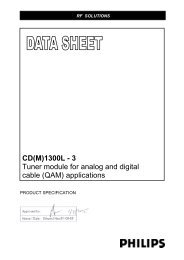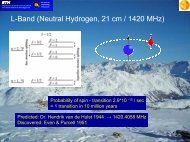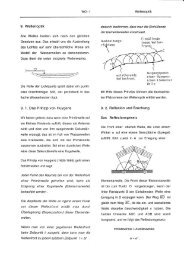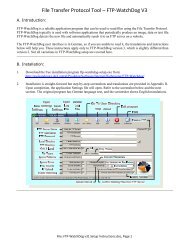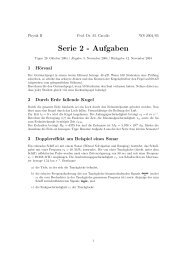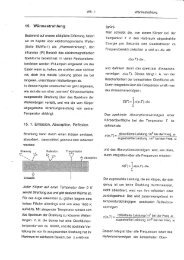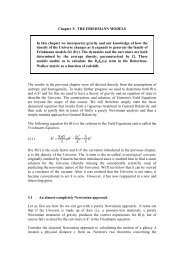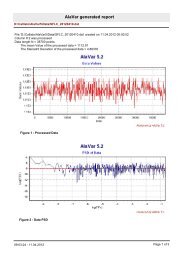here - Institute for Astronomy Umleitung
here - Institute for Astronomy Umleitung
here - Institute for Astronomy Umleitung
You also want an ePaper? Increase the reach of your titles
YUMPU automatically turns print PDFs into web optimized ePapers that Google loves.
Title: Science preparation and key personnel<br />
Reference: MUSE-MEM-SCI-053<br />
Issue: 1.0<br />
Date: 02/02/04<br />
Page: 8/25<br />
that seen in the star-bursting dwarf galaxy M82. If the material is an out-flow, the deprojected<br />
velocity of the flow is ~200 km s −1 : less than the velocity inferred <strong>for</strong> the outflow from M82,<br />
and less than the outflow velocities inferred by Pettini et al. (1998, see also Teplitz et al.,<br />
2000) from comparison of the redshifts of Ly α and nebular emission lines in the rest-frame<br />
optical.<br />
Further Observations<br />
We have also observed a field centred on a bright QSO (HB89-1738+350). This is a V=20.5,<br />
z=3.239 QSO chosen so that its rest frame Ly α would be inside the SAURON range, but also<br />
so that the cube would include a significant range w<strong>here</strong> intervening absorption systems seen<br />
along the line of sight to the QSO could be correlated with any emission line objects found in<br />
the SAURON cube.<br />
The analysis of this data set (figure 4) is still in progress, but preliminary results from work by<br />
Joris Gersson are shown in figure 5. The detection algorithm is currently under development,<br />
but follows the traditional approach of searching <strong>for</strong> single pixels with significant flux in<br />
them, and then requiring that a certain number of nearby pixels are also above some (lower)<br />
threshold. This process is run twice – once searching <strong>for</strong> positive detections, and once <strong>for</strong><br />
negative detections to allow an estimate to be made of the number of spurious detections.<br />
References<br />
Bacon et al., 2001, MNRAS, 326, 23<br />
Chapman, Lewis, Scott, et al., 2001, ApJ, 548, 17<br />
Eales et al., 1999, APJ, 515, 518<br />
Pettini M., Kellog M., Steidel C. S., Dickinson M., Adelberger K., Giavalisco M., 1998, 508,<br />
539<br />
Smail I., Ivison R., Blain W.A., Kneib J.-P., 2002, MNRAS, 331, 495<br />
Steidel, Adelberger, Shapley, Pettini, Dickinson, Giavalisco, 2000, ApJ ,532, 170<br />
Teplitz H.I., McLean I.S., Becklin E.E., 2000, ApJ, 533, L63<br />
4.2.2. Searches <strong>for</strong> line emitting galaxies at z~6.<br />
Using existing multi-object spectrographs (e.g. FORS-2) in a multi-slit+filter mode<br />
(Crampton and Lilly 1999) enables us to carry out "blank-field" searches <strong>for</strong> line emission<br />
that are directly comparable to the integral field approach of MUSE. In these surveys, the<br />
integral field is effectively built up out of multiple long-slit exposures displaced in position.<br />
The much smaller number of pixels in FORS-2 relative to MUSE means that such a survey<br />
must necessarily be more limited in spatial coverage, spectral range, and/or spatial and<br />
spectral resolution. The FORS-2 survey being undertaken as MUSE-precursor science is only<br />
targeted at the 9000-9250 Å atmospheric window between the OH <strong>for</strong>est, which corresponds<br />
to 6.42 < z < 6.58 <strong>for</strong> Ly α . This is a particularly interesting range, since it represents the<br />
highest redshifts known. Furthermore, the evidence that the reionization of the Universe may




